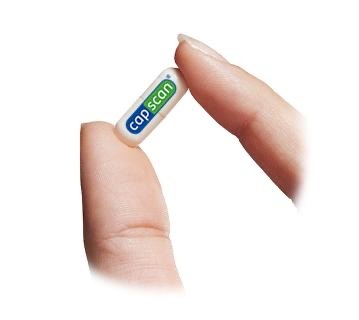The CapScan capsule passes through the small intestine to provide information about gut microbiomes and how diet affects health
By KATIE HELLMAN — science@theaggie.org
According to a recent publication in Nature, researchers have designed a capsule called CapScan to collect data about healthy human digestive systems. The project was conducted by researchers at UC Davis, Stanford University and Envivo Bio Inc.
During the study, researchers analyzed the digestion process in 15 healthy individuals and found significant correlations between diet and metabolites, the result of metabolic processes.
“To sample from four distinct regions of the intestinal tract, four devices were ingested as a set after an individual ate a meal of their choosing, wherein different device types in a set were designed to open at different, progressively higher pH levels,” the study reads.
Typically, digestion takes place when enzymes in the small intestine break down food, which is then absorbed into the bloodstream so nutrients can be dispersed throughout the body. However, the specific functions of different parts along the intestinal tract remain largely unknown.
Oliver Fiehn, a senior author of the study and director of the West Coast Metabolomics Center at UC Davis, provided insight into how CapScan could shed light on the digestive process.
“We can look into how nutrition is altered,” Fiehn said. “We can give people specific foods and use these devices to see what happens in different parts of the small intestine while they ingest them.”
The CapScan is coated with a pH-sensitive layer, which makes it so that researchers can choose which part of the intestinal tract to sample. The capsule is later recovered in the stool of participants for analysis.
“All of this information can be used for intervention,” Fiehn said. “Once we know what happens to nutrition and which microbes are responsible, and also maybe which drugs and other compounds interfere with microbial properties, then we can intervene appropriately. Instead of targeting human genes, we would target microbial species to improve health.”
CapScan also hopes to provide a much more thorough analysis of the gut metabolome (the small molecules involved in metabolism) and information about the gut microbiome.
Jacob Folz, first author on the study and postdoctoral researcher in Fiehn’s lab at UC Davis, commented on how CapScan overcomes the drawbacks of other methods used to study digestion.
“This study and new technology open the door to freely research what is happening in the gut,” Folz said via email. “This has previously been barred by physically invasive sampling procedures and radical diet control. Now researchers will be able to address serious questions related to intestinal health and disease, or simply look at how the digestion of a tomato compares to the digestion of an olive.”
So far, the small intestine has only been studied in individuals under sedation or through invasive but controlled procedures since digestion is difficult to research in humans. Part of this difficulty is due to limitations in clinical exams like endoscopy and colonoscopy, which can only scan up to certain parts of the digestive tract.
However, the invention of CapScan will be able to provide more comprehensive information about processes that have never been studied before, as it can travel through and survey the entire digestive tract without disrupting or contaminating an individual’s gut microbiome. In addition, clinical trials testing gut health and funcion will no longer have to consider requesting participants to undergo extreme procedures or diets that may be detrimental.
“[This project] is really the exploration of the unknown,” Fiehn said. “People think about the next frontier being Mars or being the bottom of the ocean, but there’s another frontier. We think it’s absolutely essential to understand human disease but also how microbes interact with human physiology.”
Written by: Katie Hellman — science@theaggie.org





